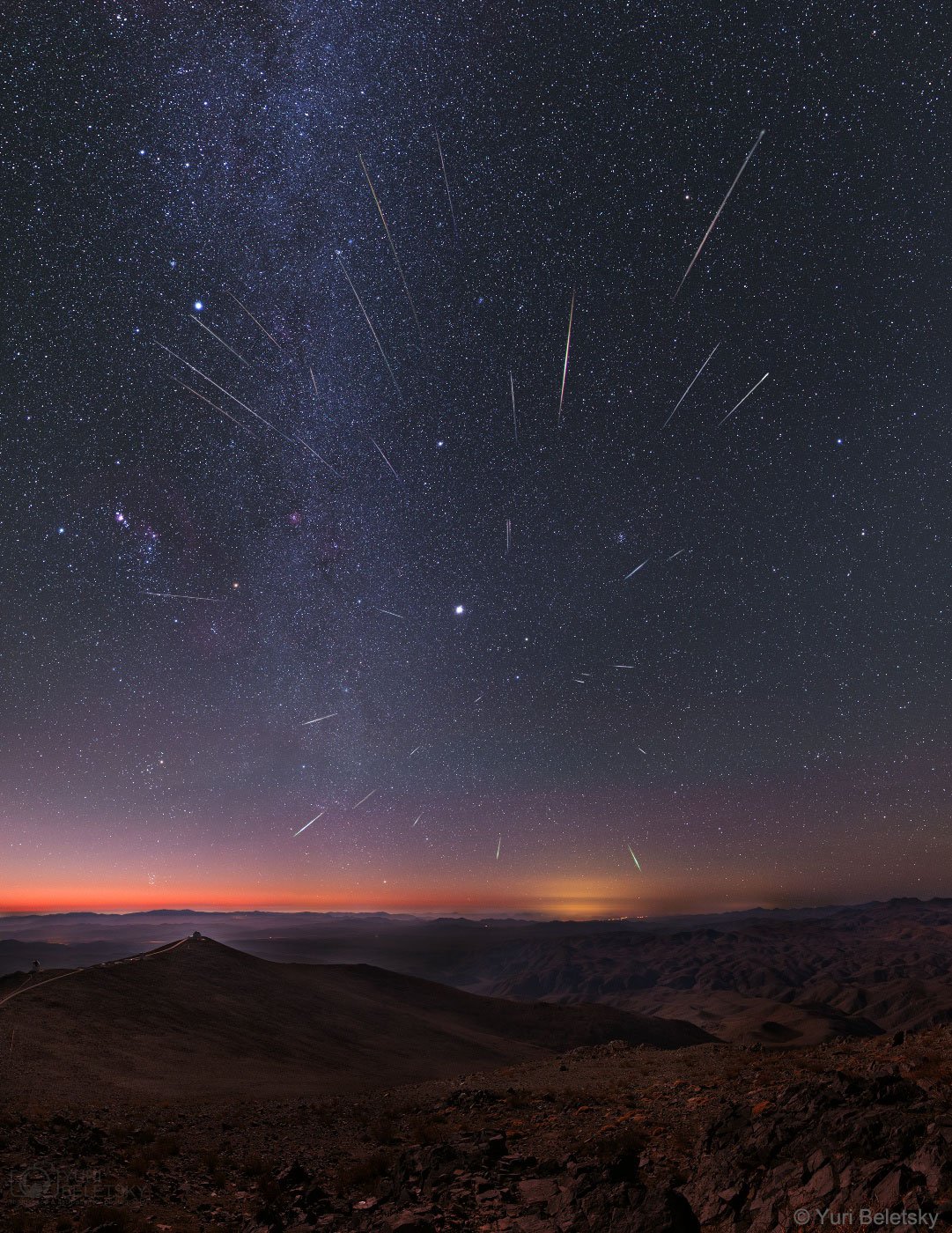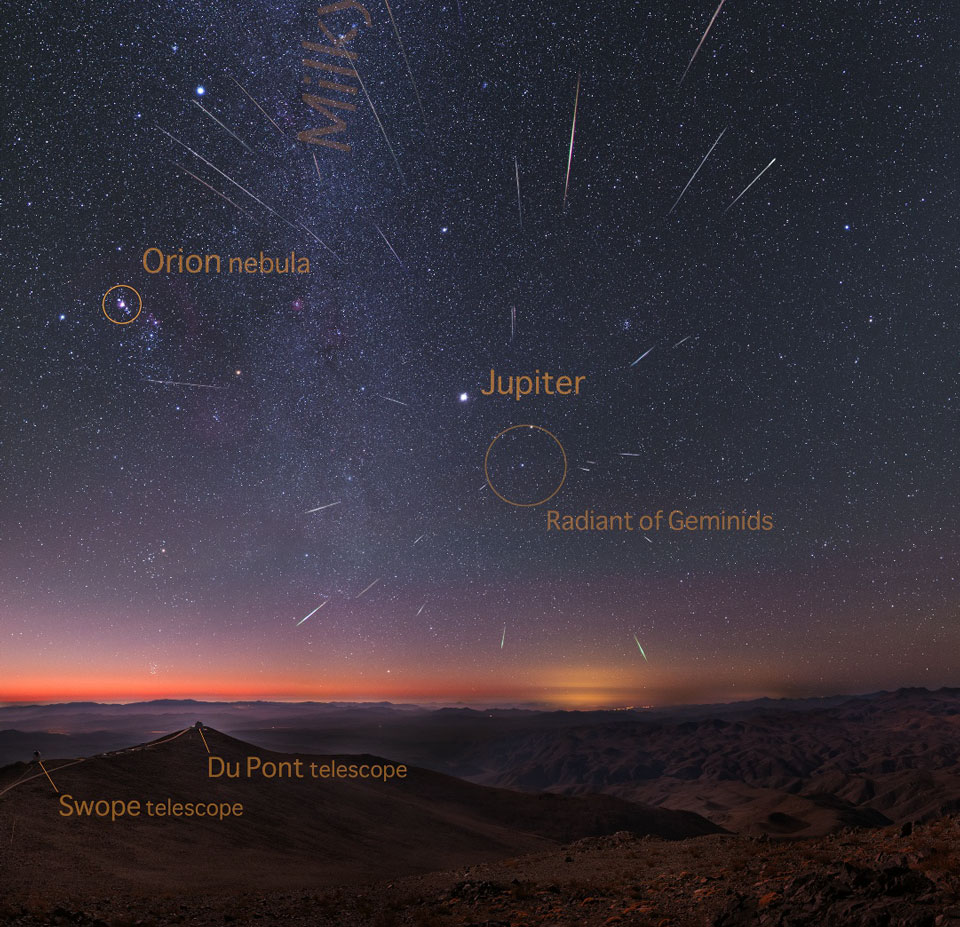2019 December 8
Geminid Meteors over Chile
Image Credit & Copyright: Yuri Beletsky (Carnegie Las Campanas Observatory, TWAN)
Explanation: Are meteors streaming out from a point in the sky? Yes, in a way. When the Earth crosses a stream of Sun-orbiting meteors, these meteors appear to come from the direction of the stream — with the directional point called the radiant. An example occurs every mid-December for the Geminids meteor shower, as apparent in the featured image. Recorded near the shower’s peak in 2013, the featured skyscape captures Gemini’s shooting stars in a four-hour composite from the dark skies of the Las Campanas Observatory in Chile. In the foreground the 2.5-meter du Pont Telescope is visible as well as the 1-meter SWOPE telescope. The skies beyond the meteors are highlighted by Jupiter, seen as the bright spot near the image center, the central band of our Milky Way Galaxy, seen vertically on the image left, and the pinkish Orion Nebula on the far left. Dust swept up from the orbit of active asteroid 3200 Phaethon, Gemini’s meteors enter the atmosphere traveling at about 22 kilometers per second. The 2019 Geminid meteor shower peaks again this coming weekend.
智利上空的双子座流星
影像提供与版权: Yuri Beletsky (Carnegie Las Campanas Observatory, TWAN)
说明: 这些流星都是从天空的一点流出来的吗?基本上是。当地球穿过绕日的彗星碎片流,所产生的流星看似全都来自碎片流的方向,而这个方向的投影点就称为辐射点。例证之一是每年12月中旬都会发生的双子座流星雨,如这幅主题影像所示。上面这张摄于2013年12月13/14日晚极大期的夜空组合影像,记录了在四小时期间,双子座流星掠过智利.拉斯坎帕纳斯天文台上空的景象。在影像的前景,可见到2.5米的杜邦 和1米的SWOPE望远镜。流星的后方,有影像中央附近的明亮木星,左方垂直上指的银河系盘面,以及最左侧粉红色泽的猎户座大星云。在拍照之时,扫集自活跃小行星3200 Phaethon(法厄松)轨道的尘埃,以每秒22公里的速度穿过大气,形成双子座流星。 2019年双子座流星雨的极大期,将出现在下个周末。








